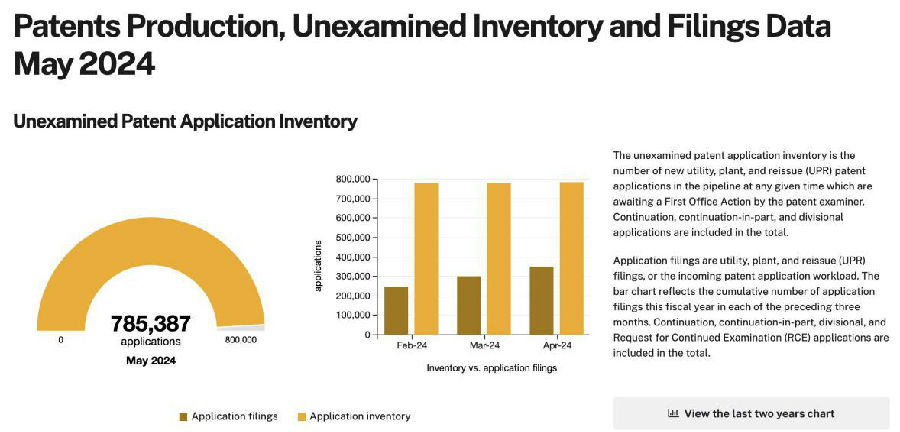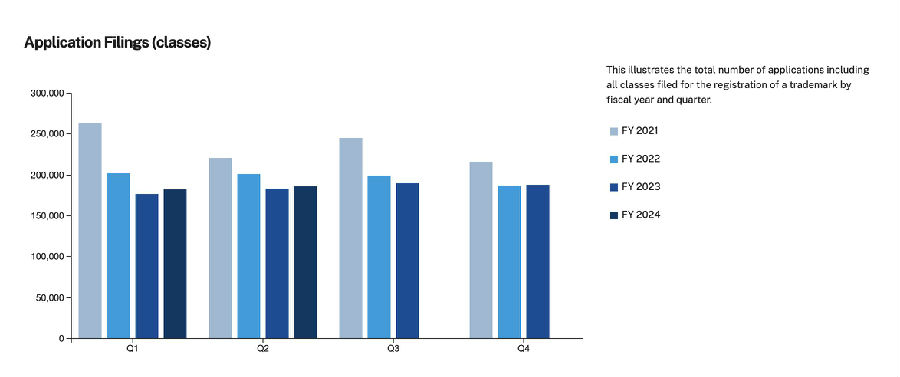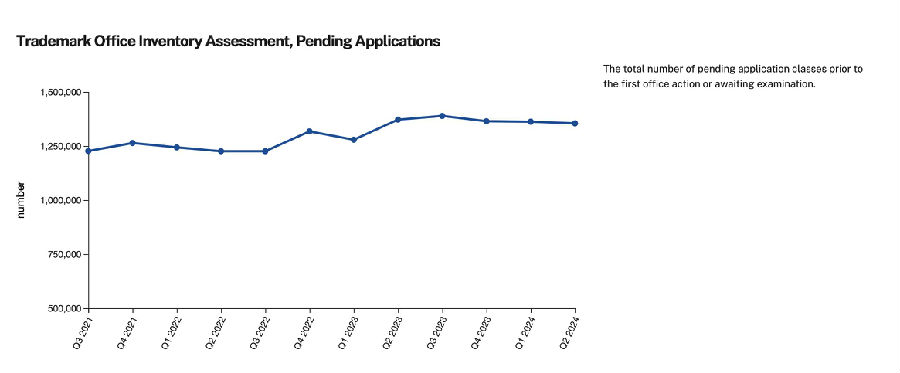
United States Patent and Trademark Office (USPTO) Director Kathleen. Kathi Vidal recently published a director's blog post about the agency's current backlog of patent and trademark applications, with the most recent USPTO data showing a backlog of 785,387 unreviewed applications, with a total waiting period of 25.6 months for patents and 14.5 months for trademarks.
"Unpredictable macro impacts, including a pandemic that has had a dramatic impact on our filing stock, have created inherited backlogged patent and trademark filings," Vidal said in his blog post.
She added that the projected slowdown in patent filings in 2020 and 2021 was "milder and transitory than expected," which also contributed to the backlog as hiring targets were reduced.
According to the USPTO's recently issued Notice of Proposed Rulemaking for the Setting and Adjustment of Patent Fees (NPRM), the current backlog is expected to increase to 820,200 cases by fiscal 2026 and decrease to 780,000 cases by fiscal 2029. People familiar with the matter said that the total backlog of 785,387 May be near or at an all-time high, but so far the USPTO has been unable to confirm this situation.

As of May 2024, the total waiting time for patents is 25.6 months and the waiting time for the first notice of review opinion is 20 months.
Based on the examiners' recommendations, the USPTO began triage patent applications in 2022 "to increase the likelihood that patent applications will be assigned to examiners with the right technical background in the first instance," Vidal wrote, and has extended working hours and recently secured the upsizing of a special rate schedule for nearly 9,000 patent professionals. "In addition, we have made changes to our award structure to better attract and reward employees who contribute meaningfully to our pending patents and quality goals," Vidal wrote.
The USPTO also hired 644 patent examiners in fiscal year 2023 and is on track to exceed its goal of hiring 850 patent examiners in fiscal year 2024, she said. This work will continue through fiscal year 2025.
As for trademarks, Vidal said that during the pandemic, "more people started their own companies, launched new products, increased cross-border e-commerce, and filed trademark applications to strengthen brand protection". This led to an "unprecedented" level of filings that year. In addition, some of the applications filed in 2020 and 2021 were fraudulent, and the USPTO has addressed this issue by transferring fraud-related work to the Trademark Registration Protection Bureau in June 2023.

n fiscal year 2023, the average waiting time for a trademark first review notice was 8.5 months; As of the second quarter of 2024, the notice of first review is 8.2 months and the total pending time is 14.5 months. But Vidal said in his blog that "the average annual waiting time for a first review notice has fallen to 7.85 months and is falling." She attributes this to changes in three main areas: (1) improvements in information technology; (2) Transfer the "Exceptional Review Notification Standard" from the first review notification stage to the final review notification stage; (3) New incentives to improve the efficiency of the examiner's first review action.
As of the second quarter of 2024, the total trademark inventory was 1,354,718.

idal outlined some of the other work the USPTO is doing to address the backlog, including a recent upcoming information technology update. She suggested that stakeholders approach her directly with ideas for reducing the backlog.
In 2007, due to concerns about the USPTO's then-backlog of 730,000 unexamined patent applications, the Government Accountability Office (GAO) submitted a report to Congress concluding that the agency's hiring staff was insufficient to reduce the backlog. Later, with the implementation of various new recruitment methods, the backlog gradually decreased. (Compiled from ipwatchdog.com)